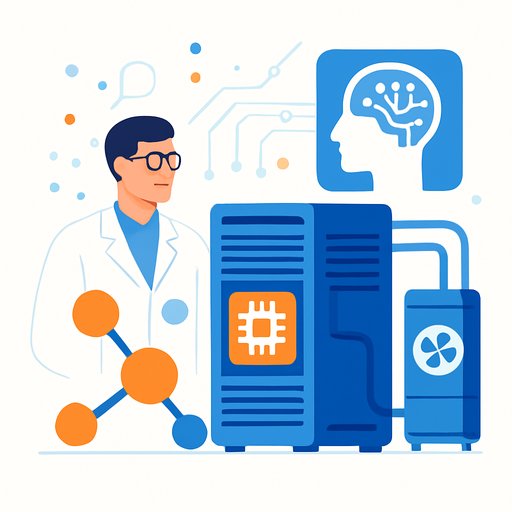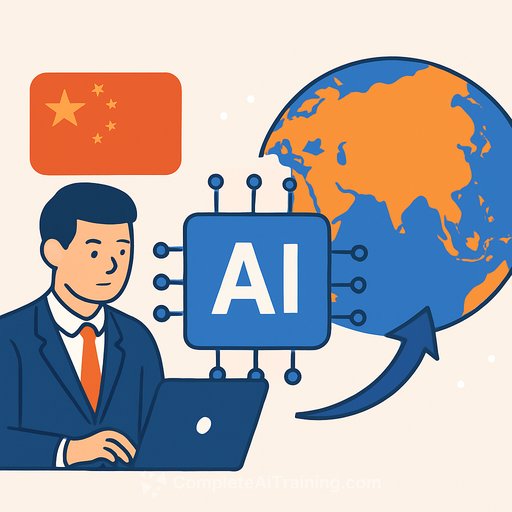G20 Summit Highlight: How Can AI Accelerate Sustainable Development in South Africa?
South Africa is wiring AI into energy, agriculture, finance, and public services. Progress hinges on one thing: security. If data, models, and automation pipelines don't run inside a trusted, accountable framework, outcomes drift and confidence fades. The G20's focus on AI for Sustainable Development makes the point clear-digital trust decides whether AI helps or harms.
Trust is the multiplier
AI can forecast climate risks, fine-tune irrigation, and streamline service delivery. It can also introduce systemic risk if it's built on weak controls. Richard Ford, Group CTO at Integrity360, puts it plainly: "AI systems that optimize resources or forecast economic trends rely fully on the quality and security of their data. When protected, they deliver stronger impact. When they're left exposed, they create risks that undermine trust and the foundations of sustainable development."
From enabler to risk multiplier
Every AI decision reflects the data that feeds it. Tamper with training data or inputs, and you distort outputs-sometimes in ways that are hard to detect. A compromised yield-optimization model could misallocate water, skew regional prices, and trigger knock-on effects across markets and ecosystems. Bias or data poisoning doesn't just break a model; it can set back entire programs.
The cost of weak signals
IBM's 2025 Cost of a Data Breach Report notes that South African organizations still face one of the longest breach detection timelines (averaging 255 days). That gap is an open invitation for data manipulation and model interference-especially where AI pipelines touch OT, citizen data, or financial rails. Read the report.
What strong AI governance looks like
- Data integrity first: Encrypt at rest and in transit, enforce least-privilege access, rotate keys, and continuously monitor data flows. Treat dataset lineage and checksums as non-negotiable.
- Model provenance and MLOps: Track dataset versions, prompts, features, and model builds. Use signed artifacts, policy-based deploys, drift detection, and documented rollback paths.
- Privacy by default (POPIA): Run DPIAs, minimize collection, anonymize where possible, and log consent. Expand privacy controls to third-party and foundation-model usage. See POPIA guidance.
- Secure SDLC for AI: Threat model data and model abuse paths, scan code and IaC, run secrets scanning, and patch fast. Include adversarial testing and model red-teaming in QA.
- Access and secrets: Enforce strong auth (FIDO2), short-lived tokens, and scoped service accounts. Separate duties for data, model, and deploy roles.
- Third-party risk: Review model APIs, data processors, and cloud regions. Lock down cross-border data flows, DPAs, and evidence (SOC 2, ISO 27001).
- Observability and audit: Centralize logs, add tamper-evident audit trails, and monitor for data drift and prompt injection. Alert on unusual inference patterns.
- Incident readiness: Build AI-specific playbooks (data poisoning, model exfiltration, prompt injection). Run tabletop exercises and define customer/regulator comms.
- Board oversight and metrics: Track MTTD/MTTR, privacy incidents, drift events, and third-party findings. Tie budgets to risk reduction, not hype.
Sector-focused guardrails
- Energy and utilities: Segregate IT/OT networks, validate sensor data, simulate failover, and require signed models for demand forecasting.
- Agriculture: Verify remote-sensing inputs, watermark satellite data, and run canary plots to detect corrupted recommendations before scale.
- Public services and health: Apply strict PII controls, bias testing, and appeal pathways for automated decisions. Log explanations for audit.
- Financial inclusion: Use explainable features, reject opaque proxies, and monitor for drift that penalizes vulnerable groups.
- Smart infrastructure: Require firmware signing, role-based device access, and anomaly detection on telemetry and control planes.
Africa's fork in the road
The continent has a rare opportunity: a young population, urban growth, and expanding digital rails. Secure AI can support fair access to services, credible climate data, and efficient public delivery. Insecure AI can widen divides and destabilize programs. The decision is strategic-security is the path to sustainability.
Practical next steps for CTOs and engineering leaders
- Map your AI estate: Inventory models, datasets, prompts, features, and integrations. Add them to your CMDB.
- Classify and protect data: Label sensitivity, encrypt everywhere, and centralize key management with HSM-backed policies.
- Stand up AI governance: Create an AI risk committee, define policies, and align to POPIA and the NIST AI RMF. Make exceptions rare and time-bound.
- Implement guardrails: Prompt shielding, PII redaction, output filters, rate limiting, and abuse detection.
- Continuous assurance: Automate drift checks, bias tests, and red-team scenarios in CI/CD. Gate production on passing controls.
- Exercise response: Run a quarterly AI incident drill and verify you can revoke keys, rotate models, and communicate clearly.
- Review vendors: Reassess DPAs, data residency, and model usage terms. Require logging and evidence for audits.
If your team needs structured upskilling in secure AI development and governance, explore our popular certifications and courses by job role.
Your membership also unlocks:





